ABOUT LECTURERS
Twenty six specialists from all over the world will give a lecture. By selecting the name you will read the corresponding biography.
Alain ASPECT (France)
Andrius BALTUSKA (Australia)
Marty FEJER (Usa)
Marie-Claire SCHANNE-KLEIN (France)
Gerard Aka is professor of Solid State Chemistry at Chimie ParisTech. He is head of the Materials for photonics and optoelectronic group in the IRCP Institute (Institut de Recherche de Chimie Paris). He received the PhD degree in Materials Science from Paris 6 University in 1988. He spent his post-doc period in the Material Science Department at UCLA in California and joined Chimie ParisTech in 1991 as associate professor. He was nominated full professor of the LCMCP- Chimie ParisTech Laboratory in 2001. He was head of the Structure and Properties of Matter Department (2001-2007). From 2006 to 2013 he was deputy director of the Chimie ParisTech Institute. He is author or co-author of 158 publications in refereed journals and conference proceedings. Prof. Aka is a member of the Optical Society of America. He served on the committees of international conferences, incl. CLEO, ASSL-ASSP. His research field is to design and elaborate new inorganic optical materials exhibiting innovative properties the field of laser. His work is now focus on crystal growth and optical study of Rare Earth oxide based solid state laser and boron based nonlinear optical materials for visible and UV range conversion.
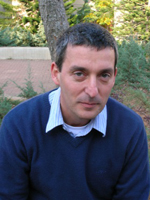
Prof. Ady Arie received his Ph.D. degree in Electrical Engineering from Tel-Aviv University in 1991. After a two-year post-doctoral period at Stanford University, U.S.A, he joined in 1993 the Dept. of Physical Electronics at Tel-Aviv University, where he is currently a Professor of Electrical Engineering and the Head of the School of Electrical Engineering. Prof. Arie is a Fellow of the Optical Society of America and Chair of the Israel Section of IEEE-Photonics. He is the co-author of more than 140 publications in peer-reviewed scientific journals, 2 book chapters and 6 patents. In the years 2008-2014 he served as a topical editor of Optics Letters. His research in the last years is in the areas of nonlinear optics – in particular periodic and quasi-periodic nonlinear photonic crystals, nonlinear beam shaping and control – as well as in electron microscopy and plasmonics. Some research highlights include the study of nonlinear diffraction and its implementation to microscopy, the development and experimental realization of nonlinear holographic elements, extending the concept of adiabatic processes into nonlinear optical processes and the study of self-accelerating beams in nonlinear, plasmonic and electron-optic systems
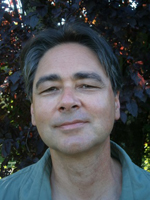
Benoit Boulanger is Professor at Grenoble University and Néel Institute CNRS where he is head of the group Materials, Nonlinear Optics & Plasmonics. He has authored over 180 papers in refereed journals and conference proceedings. His work is at the frontiers between nonlinear crystal optics, material engineering and quantum optics. His main achievements concern the crystal growth of KTP compounds, the development of the field factor formalism, the invention of the sphere method, the understanding of gray-tracking in KTP, the development of angular-quasi-phase-matching, and the first demonstration of triple photon generation. Benoit Boulanger was visiting scientist in the Ginzton Lab at Stanford University in 1993-1994. He received the Bronze Medal of CNRS in 1993, he got the prize of the iXCore Foundation for Research in 2009, and he is Fellow of the Optical Society of America and the European Optical Society since 2012. Benoît Boulanger has served on the scientific committees of major conferences, including ASSP, CLEO, EUROPHOTON, NLO, IEEE IPC. He was program co-chair in 2011 and general co-chair in 2013 of Non Linear Optics (NLO) / OSA in Hawaii, and he is Topical Editor for Optics Letters since 2014. He gave the short course Nonlinear Parametric Optics at Advanced Solid State Lasers in Shanghai in 2014.
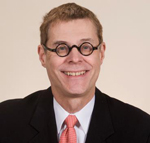
Robert W. Boyd was born in Buffalo, New York. He received the B.S. degree in physics from MIT and the Ph.D. degree in physics from the University of California at Berkeley. His Ph.D. thesis was supervised by Charles Townes and involves the use of nonlinear optical techniques in infrared detection for astronomy. Professor Boyd joined the faculty of the University of Rochester in 1977, and in 2001 became the M Parker Givens Professor of Optics and Professor of Physics. In 2010 he became Professor of Physics and Canada Excellence Research Chair in Quantum Nonlinear Optics at the University of Ottawa. His research interests include studies of “slow” and “fast” light propagation, quantum imaging techniques, nonlinear optical interactions, studies of the nonlinear optical properties of materials, and the development of photonic devices including photonic biosensors. Professor Boyd has written two books, co-edited two anthologies, published over 300 research papers (≈10,000 citations, Google H-index 64), and been awarded nine patents. His awards include an Honorary Doctorate from the University of Glasgow, 2014; Quantum Electronics Award of the IEEE Photonics Society, 2014; Humboldt Research Prize, 2010; and Willis E. Lamb Award for Laser Science and Quantum Optics, 2009. Prof. Boyd is a fellow of the American Physical Society (APS) and of the Optical Society of America (OSA). He is a past chair of the Division of Laser Science of APS and has been a member of the Board of Directors of OSA. He has also served as an APS representative and chair of the Joint Council on Quantum Electronics (it is joint among APS, OSA and IEEE/LEOS). Prof. Boyd has served as a member of the Board of Editors of Physical Review Letters and of the Board of Reviewing Editors of Science Magazine.
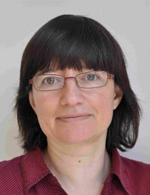
Maria Chekhova is head of Quantum Radiation group and Single-Photon Technology unit at Max-Planck Institute for the Science of Light in Erlangen, Germany. She is also part-time affiliated with M.V. Lomonosov Moscow State University. She has authored more than 100 papers in refereed journals. Her research is focused on the generation and characterization of non classical light, obtained via nonlinear optical effects as well as from nano-emitters. Her main achievements are investigation of the polarization properties of single-mode biphotons, observation of the dispersion spreading of a biphoton, generation of bright squeezed vacuum in polarization-entangled states and witnessing its macroscopic entanglement. She is teaching courses on nonlinear optics and related subjects at the Lomonosov Moscow State University and the University of Erlangen-Nuremberg. She also gave short courses at the Extreme Photonics School in Ottawa, 2013 and 2014.
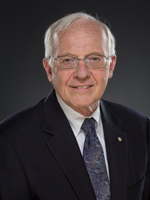
Dr. Paul Bruce Corkum is a professor at the Physics Department of the University of Ottawa and he is National Research Council Canada Research Chair in Attosecond Photonics at the University of Ottawa. Dr. Corkum's field of research is ultrafast laser spectroscopy and he has pioneered new ways to observe atoms, molecules and other tiny particles. His research methods have enabled scientists to probe the secrets of the building blocks of the universe, with the ultimate goal of observing and controlling objects at the level of atoms and molecules. In essence, his research and experiments created the field of attosecond spectroscopy. He is considered one of the world's foremost experts in strong field atomic physics, which is the study of atoms and plasmas in super-intense laser fields.
Dr. Paul Corkum is a fellow of the Royal Societies of London and of Canada. His awards include the Canadian Association of Physicists' Gold Medal for Lifetime Achievement in Physics, the Royal Society of Canada's Tory Award, the Optical Society's Charles H. Townes Award, and the IEEE's (Institute of Electrical and Electronics Engineers) Quantum Electronics Award. He has received an honorary degree from Acadia University, the Killam Award for Natural Sciences, the American Physical Society's Arthur L. Schawlow Prize for Quantum Electronics, and the NSERC's (Natural Sciences and Engineering Research Council) Polanyi Award. He was inducted as an Officer to the Order of Canada and is an elected member of the US Academy of Sciences and of the Austrian Academy of Sciences. His more recent honors include the Optical Society of America’s Frederic Ives Medal, the Harvey Prize, the King Faisal International Prize for Science, the Royal Photographic Society Progress Medal, Her Majesty Queen Elizabeth II Diamond Jubilee Medal, and the University of Ottawa Award for Excellence in Research.
Dr. Corkum received both his Ph.D. (1972) and his M.S. (1967) degrees in physics from Lehigh University in Bethlehem, Pennsylvania, USA. His B.Sc. degree, also in physics, was received from Acadia University in Wolfville, N.S., Canada in 1965. He has published more than 250 scientific papers which have been cited copiously, and is a popular and prolific lecturer in his field all over the world. He is very active in professional organizations both in Canada and internationally, serving as an officer and on the editorial boards of many of the leading professional journals. He is the holder of various patents in his field and has edited several books.
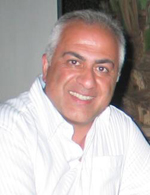
Majid Ebrahim-Zadeh is an ICREA Professor at ICFO-Institute of Photonic Sciences, Barcelona, Spain. He has been active in the advancement of nonlinear optics and parametric sources for over 20 years. His research has led the realization of new generations of innovative light sources from the UV to mid-IR and from the cw to femtosecond time-scales. He has published over 160 journal and 300 peer-reviewed conference contributions, including 80 invited and keynote talks and 12 post-deadline papers at major international conferences, has edited 2 books and authored 16 invited journal papers, major book chapters and reviews in volumes such as Science, OSA Handbook of Optics, Springer, Handbook of Laser Technology and Applications, and Laser and Photonics Review. He has been a regular annual instructor of the short course on OPOs at CLEO/USA for 14 years (2007-2010) and at CLEO/Europe since 2007. He has served over 50 times on the technical, organizing, and steering committees of major conferences, including the steering committee of CLEO/USA, Joint Council of Quantum Electronics, International Council of Quantum Electronics, and has chaired 3 international conferences. He has served as advisory editor of Optics Letters (200-2003), topical editor of Optics Letters (2003-2010), guest editor of J. Opt. Soc. Am. B (1999), associate editor of Advances in Nonlinear Optics (2009-2012), and associate editor of IEEE Photonics Journal (since 2012). He is the co-founder, president and chief scientist of Radiantis (www.radiantis.com), a company created from his research laboratory in Barcelona in 2005. He is the recipient of several honors and awards, including Innova Prize for technology innovation and enterprise (2004), and Berthold Leibinger Innovation Prize (2010). He is a Fellow of OSA and SPIE.
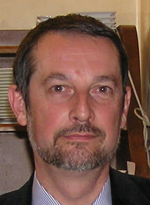
Claude Fabre is professor at the University P.M. Curie- Paris Sorbonne Université, a senior member of the Institut Universitaire de France, a fellow of the OSA and EOS and a former president of the French Optical Society. His research interests concern the quantum properties of light and light-matter interaction. His recent researhes concern more precisely the generation and characterization of highly multimode squeezed and entangled states of light, for example in optical images and optical frequency combs, and their applications to quantum metrology and quantum information processing. He is a co-auhtor of more than 200 papers and of a textbook, « introduction to quantum optics ».
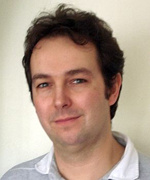
Antoine Godard is a Senior Research Scientist at ONERA, the French national aerospace research center, in the Physics and Instrumentation Department. He has authored over 40 papers in international peer-reviewed journals and over 120 communications at international conferences (including 16 invited talks). Dr. Godard is involved in the development of new optical sources based on nonlinear optics and their applications, including gas sensing systems, compact OPOs for on‐board applications, nonlinear optical materials for infrared emission, tunable picosecond parametric sources. His interests also cover more basic research topics with the investigation of photon correlations by two-photon absorption in semiconductors. He has been chair of CLEO subcommittee on nonlinear optical technologies 2014 and 2015. He is teaching “Optoelectronics” at Ecole Centrale Paris since 2008.
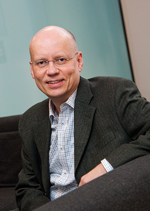
Martti Kauranen is a Professor of Physics at the Tampere University of Technology. He received a M.Sc. in Engineering Physics from the Helsinki University of Technology (Espoo, Finland) in 1985 and a Ph.D. in Optics from the University of Rochester (Rochester, NY) in 1992. During 1993-1999, he worked at the University of Leuven in Belgium. His research covers the nonlinear optical properties of surfaces, thin films and nanostructured materials, including multipolar contributions to their nonlinear response, as well as new nonlinear measurement techniques based on polarization effects. He has authored over 130 articles in scientific journals and given over 250 presentations at international conferences. He is a Fellow of the Optical Society of America. He was an associate Editor of Optics Express during 2008-2011 and is an Associate Editor of Optica since the launch of the journal in 2014. He is presently a General Co-Chair of the European Quantum Electronics Conference 2015 and of the OSA Nonlinear Optics Meeting 2015.

Professor Fredrik Laurell received his Ph.D. in Physics from KTH in Stockholm in 1990. He spent his post-doc period as the DuPont Experimental Station, Wilmington, DE, and after his return to Sweden he spent one year at the Institute of Optical Research in Stockholm before he joined the Physics Department at KTH. His primary research interest is in the fields of nonlinear optics and laser physics where he has published more than 500 journal papers and conference contributions and received 13 patents. He was the chairman of the Swedish Optical Society between 2004- 2013 and is Chairman of the National committee for optics (ICSU) at the Swedish Royal Academy of Sciences. He has also worked extensively with the EOS and the OSA. He is a Fellow of the OSA and in 2003 he received the Göran Gustafsson Prize in Physics.
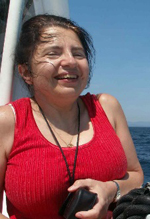
Isabelle Ledoux-Rak is professor in the Physics Department and Head of the Molecular and Quantum Photonics Laboratory (LPQM) at Ecole Normale Superieure de Cachan. Her main research activities are focused on molecular and supramolecular engineering of molecules and materials for photonic applications, especially multifunctional nanoscale compounds and structures combining NLO and laser properties. She is currently investigating the quadratic nonlinear optical properties of noble metal nanoparticles. She is also involved in a project devoted to the design, elaboration and characterization of passive ring-shaped microresonators for sensor applications. Her research is the subject of collaborations with different international groups in Europe, United States and Israel. I. Ledoux is the author or co-author of 220 publications. Isabelle Ledoux-Rak is also coordinating an Erasmus Mundus Master course (Molecular Nano- and Biophotonics for Telecommunications and Biotechnologies) since 2006. She is also Chief Editor of a new Journal, Advanced Device Materials.
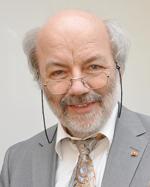
Prof. Dr. Gerd Leuchs studied Physics and Mathematics at the University Köln until 1975 and received the Ph.D. in 1978 and the Habilitation degree in 1982, both from the Ludwig-Maximilian University in München. After several other stations he was appointed as a professor at University Erlangen-Nürnberg in 1994. In 2000 he started discussions with the Max Planck Society, which led to the foundation of the Max Planck Institute for the Science of Light (MPL). Today Gerd Leuchs is one of the directors of the MPL. He is Fellow of the European Optical Society, of the Optical Society of America and of the Institute of Physics, UK. He won the Quantum Electronics Prize of the European Physical Society (2005) and is member of the German Academy of Science Leopoldina. Since 2012 he is Adjunct Professor at the University of Ottawa in Canada. The research of Gerd Leuchs spans a wide range from classical optics via quantum optics to quantum communications. One project at the centre of his activity is the attempt to demonstrate the process corresponding to the time reversal of spontaneous light emission from a single atom in free space. Once this challenging goal is achieved, one will have the technology to impedance match a single photon to an atom in free space without the help of a cavity, allowing for the implementation of quantum gates operating at the few photon level. A unique feature will be the broadband nature of the interaction in free space. Several required technological, classical and quantum optical challenges are currently being tackled: (1) the creation of aberration-free in-going vectorial dipole waves; (2) the generation of single photon waveform of adjustable temporal shape; (3) the preparation of a single doubly ionized ytterbium ion and its precise location in space. Closely related is research in continuous variable quantum key distribution and quantum hacking, in the generation of quantum light e.g. from whispering gallery mode resonators, in quantum discord and entanglement measures, as well as in shaping and characterizing tightly focused light field distributions.
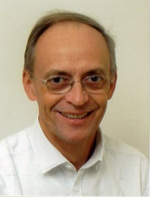
Guy MILLOT obtained the Ph.D. degree in physics from the University of Burgundy (UB) in 1986. In 1987, he carried out post-doctoral research at M.I.T. on time-resolved infrared double resonance experiments. He has been an Assistant-Professor of UB between 1988 and 1994, where he carried out research on nonlinear spectroscopy, molecular structures, time-resolved double resonance experiments, collisional effects on Raman line-shapes for temperature and concentration measurements in combustion media. In 1994 he was promoted to a full Professor position and began working on the theme of optical solitons and nonlinear fiber optics; he developed an internationally-leading research group in this field which has achieved numerous important scientific breakthroughs. His current research interests are focused on optical solitons, modulation instabilities, polarization attraction process, supercontinuum, rogue waves, ultra-high repetition pulse trains, nonlinear propagation dynamics in optical fibers and applications to dual-comb spectroscopy. He is the leader of the group « Solitons, Lasers and Optical Communications» of ICB Laboratory and deputy director of ICB. He is the author and co-author of over 170 original articles, over 200 proceedings, ~50 invited talks in national and international conferences and 1 patent. His research has been recognized by two prestigious awards: membership of the Institut Universitaire de France (2000) and the silver medal from the CNRS (2004). He obtained the prize of research from the foundation iXCore (2011) and elected Fellow OSA (2012). He is a frequently requested project expert, program committee member of diverse national and international conferences and PhD examiner.

Gérard Mourou is a Professor Haut Collège and Director of the new center IZEST (International center for Zettawatt-Exawatt Science and Technology) at the Ecole Polytechnique. With the invention of the amplifying laser technique known as “Chirped Pulse Amplification” (CPA), G. Mourou is recognized worldwide as the father of the Extreme Light field, bridging Optics with High Energy Fundamental Physics. Upon his return to France he initiated the creation of the European “Extreme Light Infrastructure”(ELI). With funding of 1B€, ELI is currently being built as 3 pillars in three countries, i.e. Czech Republic, Romania, and Hungary and is the largest civilian laser system. In France G. Mourou initiated the Apollon Program on the Plateau of Saclay. Societal applications are also paramount for him. As an example, with his colleagues at the University of Michigan, based on CPA they initiated the field of femtosecond corneal refractive surgery, treating today, one million patients a year.
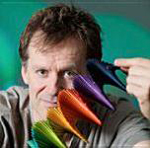
Miles Padgett holds the Kelvin Chair of Natural Philosophy at the University of Glasgow. He leads the Quantum Imaging Hub, one of four hubs in a UK-wide network. In 2001 he was elected to Fellowship of the Royal Society of Edinburgh (RSE) and in 2014 to Fellowship of the Royal Society - the UK's National Academy. In 2009, with Les Allen, he won the Institute of Physics Young Medal and in 2014 the RSE Kelvin Medal. In 2015 he won the Science of Light Prize from the European Physical Society. Milles Padgett is internationally recognized. His best known contributions include an optical spanner for spinning micron-sized objects, use of orbital angular momentum to increase the data capacity of communication systems and an angular form of the Einstein-Podolsky-Rosen (EPR) quantum paradox.
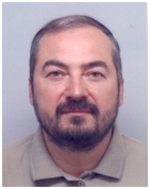
Valentin Petrov received the M.Sc. degree in nuclear physics from University of Sofia, Bulgaria, in 1983, and the Ph.D. degree in optical physics from the Friedrich-Schiller-University, Jena, Germany, in 1988. He worked as an Assistant Professor at the Quantum Electronics Department, Faculty of Physics of the University of Sofia from 1988 to 1991. After a one year Post. Doc. research visit to the University of Regensburg, Germany, he joined the Max-Born-Institute for Nonlinear Optics and Ultrafast Spectroscopy (MBI) in Berlin, Germany, in 1992. Further research stays abroad include a JRDC STA fellowship at RIKEN (Japan) in 1996-1997 and a visiting professorship to the Université Joseph Fourier (Grenoble, France) in 2014. His research interests include ultrashort light pulses, laser physics, nonlinear optics, and optical materials. He has co-authored about 350 papers in peer-reviewed scientific journals and more than 400 conference presentations. Among the international projects coordinated, he has led two EU consortia within the 6th and 7th Framework Programmes, www.dt-crys.net and www.mirsurg.eu. Dr. Petrov is a member of the Optical Society of America. He served on the committees of few major international conferences, incl. CLEO, ASSL-ASSP, Europhoton, and Ultrafast Optics, and is topical editor (Lasers) in Optics Letters since 2012.
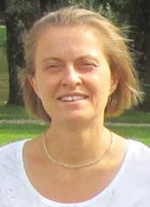
Marie-Claire Schanne-Klein studied at Ecole Polytechnique in France and received the PhD degree in Nonlinear Optics. She is now Research Director at the French National Center for Scientific Research (CNRS) and she is affiliated to the Laboratory for Optics and Biosciences at Ecole Polytechnique within the Paris-Saclay campus. She has authored 70 papers in peer-reviewed journals, with more than 2500 citations, and 3 book chapters. She has been working first on nonlinear optical spectroscopy of semiconductor nanoparticules (1989-1995) and published important contributions to the first physical characterizations of these materials. She then studied nonlinear optics of chiral molecules (1996-2002), before dedicating herself to nonlinear optical microscopy of biological tissues. Her group mainly focuses on Second Harmonic Generation (SHG) microscopy of collagen tissues and matrices, with important contributions to the physical origin and quantitation of the intrinsic nonlinear response of collagen and to applications in quantitative imaging. M.-C. Schanne-Klein is also affiliated to the physics department of Ecole Polytechnique and she is teaching in nonlinear optics, quantum optics and lasers. She is member of CNRS evaluation and recruitment committees in optics and in interdisciplinary.
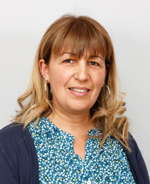
Patricia Segonds received in 1988 the Ph.D. degree in Condensed Matter in Physics then got a post-doctoral position at the Physics Department of the Ohio State University in USA. Then she joined the Center of Molecular Physics and Optics (CPMOH), as an Associate Professor of the University Bordeaux I. She teached optics and lasers, and is co-author of 7 teaching books about optics and thermodynamics (DUNOD editions). Her primary research work dealt with third order nonlinearity from Kerr effect. She implemented a new method of characterization of glasses with a pump-probe technique coupled to a femtosecond laser. In 1998, she joined Joseph Fourier University in Grenoble. After 9 years of research work at the Laboratoire de Spectrométrie Physique (now LIPHY), she joined NEEL Institute when it was founded and is now Professor. Her current expertise includes crystal optics and nonlinear optics for frequency conversion in crystals. She implements methods of characterization of new crystals for tuneable optical parametric oscillatior (OPO) and Optical Parametric Generator (OPG). She has authored 89 papers in refereed journals and conference proceedings. Since 2012 she is a member board of the European Optical Society (EOS). She organized the first summer school of the EOS Annual Meeting (EOSAM) at Berlin in 2014 and is now in charge of the EOS-student clubs coordination.

Prof. Thomas Südmeyer is director of the Physics Department and head of the Time and Frequency Laboratory at the University of Neuchâtel. His research interests are exploring and pushing the frontiers in photonics, metrology, and ultrafast science. He studied Physics at Leibniz University Hanover and ENS Paris, receiving fellowships of the Studienstiftung des deutschen Volkes and the European Union. In 1999, he started working on ultrafast lasers during an EU fellowship at Strathclyde University, Glasgow. In 2003, he obtained the PhD degree from ETH Zurich for research on the first mode locked thin-disk lasers and novel nonlinear systems. During 2003 to 2005, he developed industrial laser solutions at Sony Corporation, Tokyo. From 2005-2011, he investigated new concepts for ultrafast science and technology at ETH Zurich, obtaining the Habilitation degree. Since September 2011, he is full professor and director of the Time and Frequency Laboratory at the University of Neuchâtel. He acted as coordinator of several Swiss and European research projects and was awarded with an ERC Starting Grant in 2011. He serves the research community as associate editor for Optics Express and Photonics Technology Letters, and as member of the Scientific Advisory Boards of the European Optical Society and the ESA “Atomic Clock Ensemble in Space (ACES)” project. He acted as General Chair for the Ultrafast Optics Conference 2013 in Davos and for the EPS/QEOD Europhoton Conference 2014 in Neuchâtel. Thomas Südmeyer is author of more than 70 publications in international peer-reviewed journals (>2000 citations, Hirsch H-index 25), two book chapters, and he holds or applied for 10 patents.

Dr. Sébastien Tanzilli received the M.Sc. degree in Physics from the Grenoble ``Institut National Polytechnique'' (INPG) in 1998. He received the Ph.D. degree in Physics in 2002 from the University Nice Sophia Antipolis (UNS) where he worked on integrated optics for quantum communication, in collaboration with the Group of Applied Physics (GAP) in Geneva. From 2002 until 2005, he was a post-doctoral assistant professor at GAP. In 2005, he joined the Laboratoire de Physique de la Matière Condensée (LPMC) in Nice as a permanent CNRS researcher. He leads the “Quantum Information with Light & Matter" group that finds interests in both fundamental quantum optics and in pushing forward quantum information enabling technologies. He has been publishing in leading international journals, and also contributed to several book chapters. Dr. Tanzilli was awarded the 2008 Fabry - De Gramont prize by the French Optical Society (SFO), the 2009 CNRS Bronze Medal, the 2010 prize from the iXCore research foundation, and the 2013 UNS Medal. He is also the director of the CNRS research network (“Groupe de Recherche”) on “Quantum Information, Foundations & Applications".

Valérie Véniard is a scientist at CNRS. Her first area of research focused on the theoretical description of laser-matter interaction and more specifically on the dynamical response of atomic and molecular systems to intense femtosecond laser pulses, such as multiphoton processes and relativistic effects. In 2005, she moved to the Laboratoire des Solides Irradiés at the Ecole Polytechnique in the “Theoretical Spectroscopy “ group, where she aimed at initiating a new field of activity at the border between nonlinear optics and condensed matter. The objective is the development of theoretical and numerical approaches to describe nonlinear optical properties of bulk materials and nanostructures, using ab initio methods based on Density Functional Theory. Second-harmonic generation, one of her primary current research areas, allows for applications related to the design of highly innovative materials for specific applications.
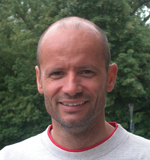
Hugo Zbinden is professor in the Group of Applied Physics of the University of Geneva. His research has spanned various areas from optical sensors, single photon detectors, quantum communication and the foundations of quantum mechanics. In 2001 he co-founded id Quantique, a spin-off committing to commercialise quantum cryptography and other quantum technologies. Hugo Zbinden has published more than 140 peer reviewed papers. He is associate editor of the Journal of Quantum Information and Communication.
